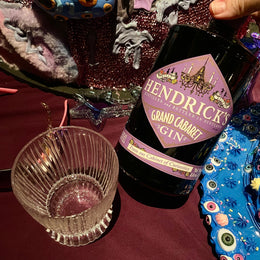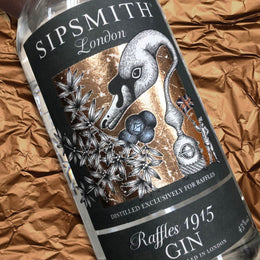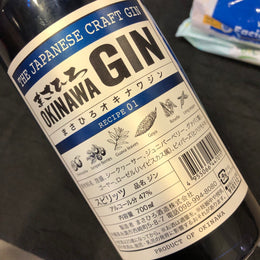
Perfume Tree Gin is a craft gin brand from Hong Kong started by mixologists Kit Cheung and Joseph Cheung, who set out to bottle the essence of Hong Kong, from the busy neon-lit streets to its breezy, summer beaches. To do so, the duo crafted a blend of botanicals, with includes white champaca flowers, sandalwood, aged tangerine peels and long jing green tea.
The name Perfume Tree is actually named after the White Champaca flower that is native to the area, which should clue you in to how crucial the White Champaca flower was to the formulation of the gin's botanical blend. The White Champaca flower can be found all over Hong Kong's streets, and its essential oil is known to be among some of the world's most expensive. Yet, the white champaca flower can be very difficult to work with as it has a very short shelf life of 6-7 hours at room temperature before it wilts, and sourcing a steady supply can be challenging due to its rarity. 
Another botanical that caught my eye was their use of aged tangerine peels. This departs from a lot of western gin brands, which tend to use lemon or orange peels. Aged tangerine peels is a very common qi-regulating herb that's been used in traditional Chinese medicine for centuries. As the tangerine peel is aged, its known to develop more complex and mellow aromas, while its inherent bitterness is softened to make way for a subtle sweetness. As someone who's grown up in Asia and tasted its complex, almost herbal flavors for myself, I was curious to see how the flavor nuances of aged tangerine peels might play out in the final distilled gin.
So without further ado, let's get to tasting!
Perfume Tree Craft Gin - Tasting Notes

Nose: Very aromatic and punchy. I get an immediate note of salty-sweet dried tangerine peels. The sweetness is also accentuated somewhat by a subtle hint of sarsaprilla root. There’s also some bold, herbal undertones of ginseng and mugwort, with light spices of white pepper and coriander that help to balance and soften the orange candied sweetness.

Taste: Just as flavoursome as the aroma with a burst of spicy, floral and sweet notes! The texture is very silky with a light oiliness. The soft herbality and spiciness that I picked up on the nose becomes bolder and more distinct on the palate - coriander seeds and sandalwood finds greater footing here. Notes of floral champaca and jasmine also come to fore, joined by a touch of sweet kumquats and mandarins.
Finish: Long, with warming spiciness of white pepper and coriander, light oaky sandalwood, and a more subtle orange candied note.

In a Tonic:

I tried this gin with some elderflower tonic and lemon peels to complement the floral notes. And interestingly, it helped transform the nature of the orange notes in the gin from something sweeter and more candied to something a little more bittersweet - akin to pomelo rinds and orange bitters. The tonic also does a good job of enhances the oakiness of the sandalwood and the headiness of the spices.
Overall Thoughts:
This is a really silky, beautiful gin that manages to balance floral, herbal, woody notes in a very cohesive way. There’s a lot of flavours going on, but nothing ever feels too overwhelming. More impressively, I did genuinely feel like it was able to evoke an intangible sense of East Asian nostalgia. Case in point: while citrus orange notes are not uncommon in many gins, its appearance in Perfume Trees was particularly unique with a salty-sweet dimension that immediately cued memories of those preserved mandarin peel packet snacks that’s oh so popular with kids in this region. The herbal and oaky notes also play really well with each other, evoking a sense of strolling through a Chinese medicinal hall without the associated headiness.
There’s not much juniper in it, but that’s perhaps the point as with most other contemporary gins. So unless you’re a diehard juniper junkie, this is definitely a gin I’d recommend you try at least once, because when drunk neat, it does promise a really interesting flavour journey if you have time to sit with it.
With juniper & joy,

@lotusroot518







